The question, Do apps belong in board games?, is one that has been tossed around often due to the recent rise in app-driven and hybrid board games. There are a few loud voices strongly opposed to the idea and fewer still saying apps are the future of board games. Still, the general consensus is that apps can be beneficial when they are done correctly. The real question then becomes, where do apps belong in board games?
Tracing the history of app-driven games brings us close to the answer, but the next few years will define where apps end up in the tabletop space. Here’s a look at the notable moments in the history of app-driven games and where these types of games are headed.
The Birth of App-Driven Board Games
I don’t think the board game market is as saturated with app-driven experiences as people believe, but there’s no denying that they have caught on in recent years. Just open Kickstarter and I bet in seconds you’ll find a grandiose, miniature-filled, campaign game with an integrated app begging for your hard-earned cash. So where did all this start?
The idea itself has actually been around for a long time. It wasn’t until everyone was walking around with computers in their pockets that it would catch on in a meaningful way.
The very first board games that used software alongside physical pieces were made in the ‘80s, like this beauty released in 1984.
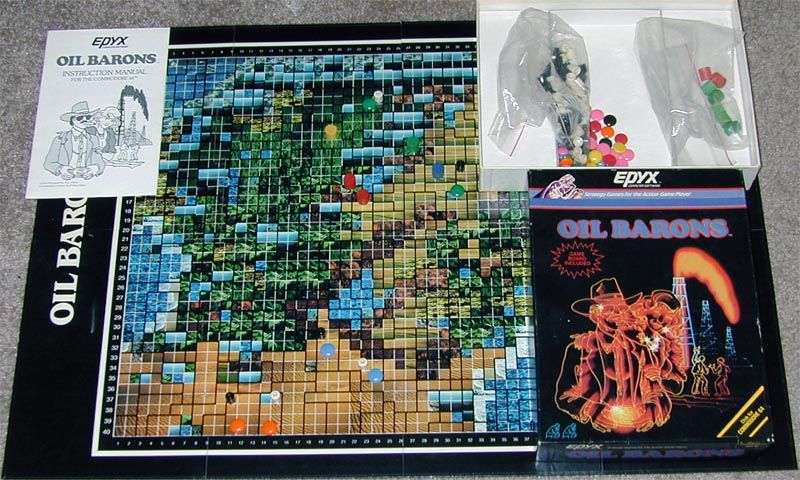
This is a game called Oil Barons that includes a monstrous game board, over two hundred plastic pieces, two floppy discs, and according to the back of the box, “the fun of increased land holdings, striking it rich, and even unloading worthless parcels on the uninitiated.” Yee-haw, sign me up!
This was one of a handful of games that came out over about ten years that all adhered to a similar formula. You make a decision on the board, input that decision into the software, and are given the results on the screen.

This way, you could let the computer do all the bookkeeping while you focus on the strategy and gameplay!
Obviously, these games didn’t take off, but to be fair, the tabletop scene was still in its infancy and wasn’t ready for this kind of innovation. The technology wasn’t there either.
I also doubt that these games directly inspired what would become companion apps. However, I would be remiss if I didn’t pay homage to the true grandparent of app-driven board games.
The Awkward Teenage Years
While there were a handful of games that included apps after the ’80s, we wouldn’t see a real attempt to popularize app-driven games for thirty years. In 2014, two games were released that integrated smart devices into gameplay: Golem Arcana and Alchemists.
The story of Golem Arcana is as sad as it is short. This was an ambitious Kickstarter game that touted the typical pretty miniatures, but it came with another interesting twist. Not only did it have an app, but it had a Bluetooth stylus that would interact with the physical pieces and communicate with the app.

You use the stylus to scan your units and elements on the game board and to perform actions like moving and attacking. The app shows the map and keeps track of all of the information for your units. In other words, the app does the bookkeeping, so you don’t have to. Sound familiar?
This game had its skeptics, but Golem Arcana received positive reviews from both inside and outside of the board gaming sphere. It seemed the tech was functional, if a little finicky at times, and the mechanics were surprisingly deep and engaging. Despite all this, the game was discontinued only two years later.
There are two big reasons this game didn’t catch on. The first reason is the price. At $80 for a product that was experimenting with something very new and different, this game was a tough sell. It didn’t bring in enough money for continued support.
The second issue is touched on in this review. The reviewer enjoyed the game, but struggled with the constant back and forth between the physical board and the digital one. He ends his review with a series of questions.
“Is this a board game? Or is it a miniatures game? Or is it a computer game? Do we need the board? Why do we have the board? Do we need the minis? Why aren’t we just playing on the app? Because that wouldn’t be cool?”
The issue wasn’t the gameplay, and it wasn’t that technology was involved, it was that it didn’t strike the right balance between the physical components and the technology. Golem Arcana was a board game with an app that had people wondering if the board game was even needed. It was great to have the big minis on the table, and it was cool to use the stylus and the app to keep track of things, but it was ultimately just novel. As fun as it was, it could have been an app without any physical components at all.
The designers behind Golem Arcana understood the importance of moving physical pieces around. They also understood that miniatures games were hard to play because of the rules overhead, and they addressed that. They were wrong to put so much of the game into the technology, especially since it was unfamiliar and expensive.
Golem Arcana did succeed at something else. It opened the door to the idea that apps could make complicated games more accessible.
Finding Success
Also released in 2014 was Alchemists. If you aren’t familiar with Alchemists, it is a worker placement game centered around a deduction logic puzzle that has you figuring out the alchemical properties of different ingredients. The app in Alchemists randomizes the elements of the deduction puzzle, and you use your phone to scan ingredients and get information that helps you solve the puzzle. The app handles information that human players can handle, but shouldn’t have to.
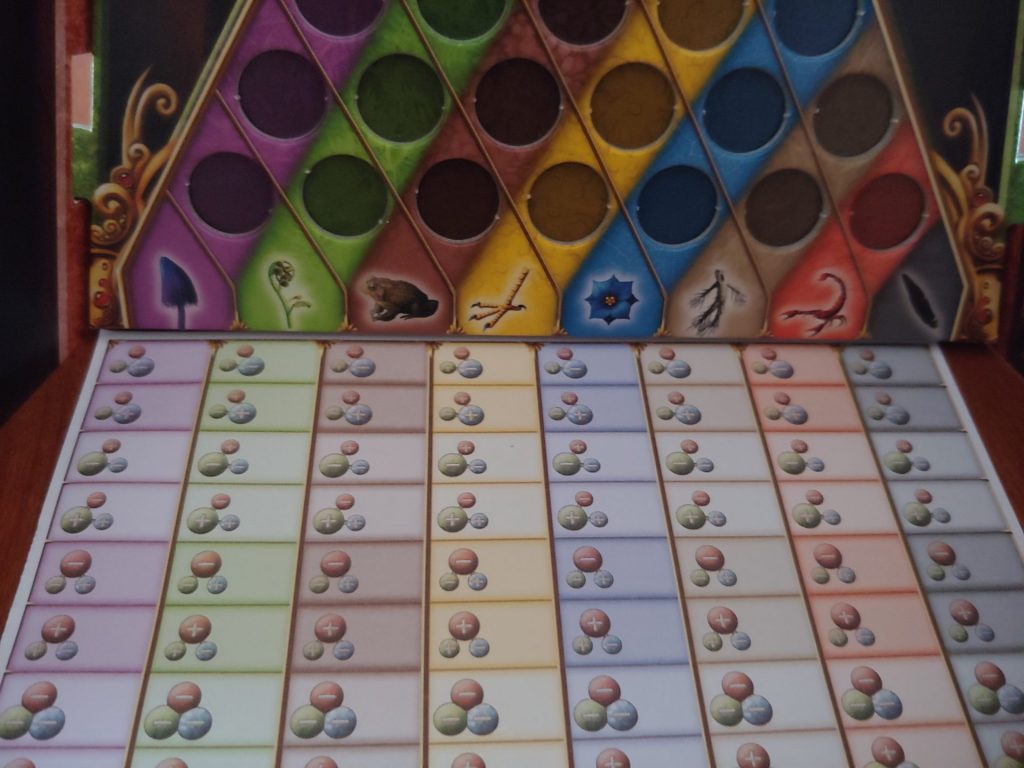
The game did include a variant that had a human player randomize pieces on a pyramid and act as a human-computer. You would ask this human-computer about the ingredients you were mixing, and they would consult the chart and give you the result of your experiment. If this doesn’t sound fun, that’s because it isn’t really.
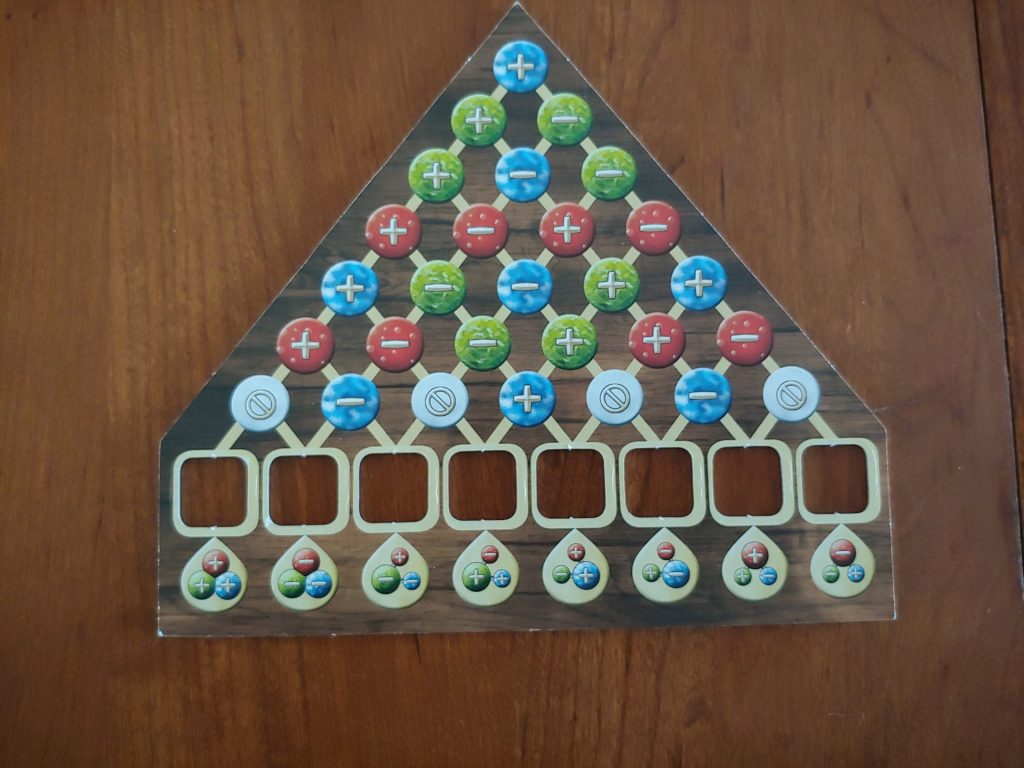
This is precisely the feeling an app should give you when you are playing a game. You should think to yourself “technically I could do what the app is doing, but that would make this game a lot more tedious and a lot less fun.” You could also think this about Golem Arcana, but the tedious parts were core elements of the gameplay. With Alchemists the app handles tedious calculations that, if you had to do them yourself, detract from the core gameplay. The app doesn’t steal the show, it’s just another component.
Alchemists sits at number ninety-eight on BoardGameGeek’s rankings at the time of writing. Say what you will about their ranking system, but if a game shows up in the top 100, it will have solid mechanics, mass appeal, or some combination of both. Nearly every other app-driven game that released at the same time or before Alchemists is ranked several thousand games lower. The only hybrid game that ranks higher than Alchemists is Mansions of Madness: Second Edition.
Working Together
In 2016 Mansions of Madness: Second Edition took a one vs. many, heavily thematic, minis-filled, dice-chucking, Cthulhu game, and turned it into a co-op experience against app-driven baddies. For some people, this was a step backward. The original Mansions of Madness suited players who were looking for that one vs. many experience and didn’t like co-op games, or who enjoyed going up against a human player. A lot more people, though, do enjoy co-op games and see needing a game master as a barrier to play. Having an app run the game makes the setup shorter and solves a major problem with cooperative games: it keeps track of the fiddly, non-human system you are up against.
Overall, it makes the game much easier to get to the table, and it allows all the players to explore, discover secrets, and watch the story unfold together. It has the same elements that make Dungeons & Dragons so popular, but without a lot of the barriers.
It’s worth pointing out that Mansions of Madness was published by a big publisher with money to spend and a built-in audience, but they were still on to something with this formula. Cooperation and a focus on narrative are what really set Mansions of Madness apart from Alchemists. While Alchemists remains the most successful, competitive, euro app-driven game, , these kinds of games continue to trend towards cooperative experiences. You could say that Mansions of Madness unlocked the secret to a successful app-driven game.
Puzzle Solving
The next two years would see the release of the Unlock! Series (2017) and Chronicles of Crime (2018), the next big players in the app-driven scene.
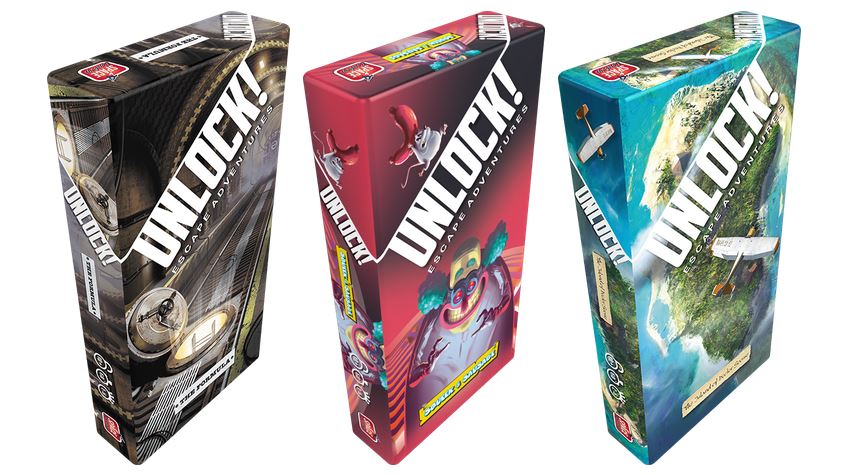
With the boom of escape rooms came a myriad of escape-room-style games. One of those games was Unlock!, featuring a pile of cards and an app that acted as a timer, clue-giver, and puzzle solver. The cards present riddles and puzzles and you have to solve those puzzles and enter the answers into the app before the time runs out. The app keeps all the secrets and allows players to focus on puzzle-solving without the risk and temptation of spoiling the answers.
This game has no shortage of entries with even more slated for release this year. A slew of releases doesn’t make a good game, but they wouldn’t keep making them if someone wasn’t buying them, right? Unlock! is another game that tapped into what makes an app fun. It hides information that players have to work together to solve and discover. Games like Unlock! served as a stepping stone for what came next.
Mystery Solving
In February 2017, Chronicles of Crime launched its Kickstarter. It boasted a cooperative, story-driven experience with unique app integration. Players work together to solve a crime by scanning QR codes on witness, item, and location cards. There are even sections that use VR goggles and your phone to investigate scenes in search of clues.
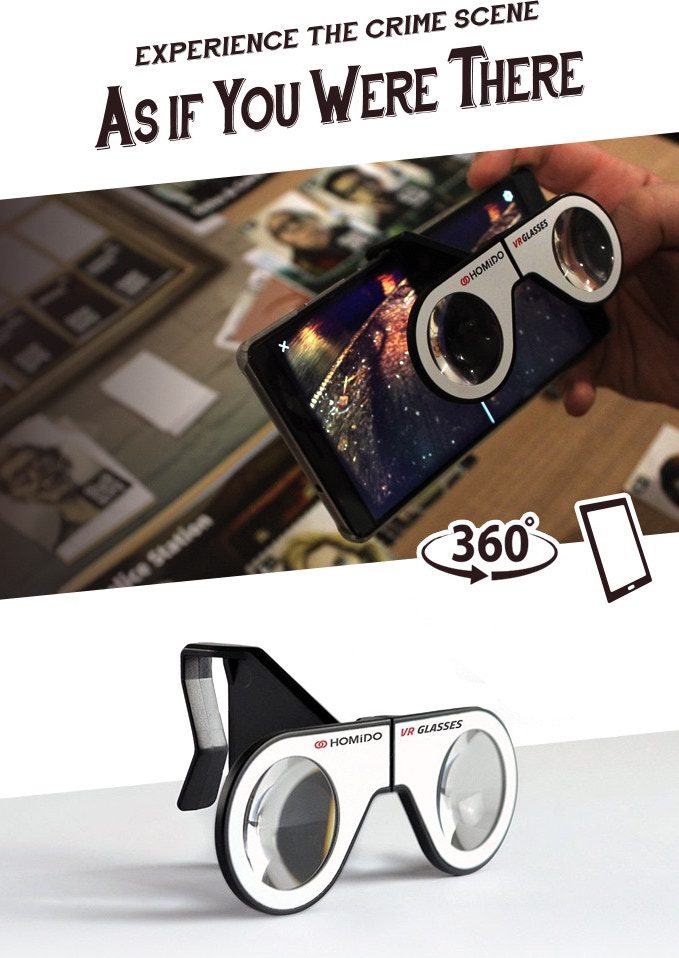
Chronicles of Crime met it’s $15,000 goal in 25 minutes. By the end of its Kickstarter campaign, the game raised $795,244. It was safe to say that app-driven games had an audience and people were excited by the future of this genre. Chronicles of Crime did five smart things that sold people on the use of the app.
It used a tried and true method of app integration. At this point, we had already seen some level of success in games that used apps to store information and keep track of things for you. We could also see that the most successful games with apps were story-driven and cooperative.
It used the app to make the game more replayable. Thanks to the QR codes, all the different cases could be stored on the app and use the same cards you get in the base game. This was a breath of fresh air in a Kickstarter market full to the brim with massive games promising heaps of boxes and pieces.
It was affordable. The base game price on Kickstarter was only $39 and included a tutorial and 5 cases.
It made the experimental tech optional. The VR glasses were optional and you could even opt out of them in your pledge to make the game more affordable.
It kept the physical elements. The makers of Chronicles of Crime knew people would want to spread out physical evidence like a real-life detective. This probably could have been an app-only game as well, but the physical pieces enhanced the app and vice-versa. This is aided by a theme that fits the gameplay perfectly.
Looking Ahead
App-driven games have found their audience in puzzle-solving, storytelling, and cooperative experiences. There’s clearly a hunger for this type of game, and we will keep seeing them being released.
The one thing that remains unclear is whether more ambitious narrative games will catch on and find their place in this genre. Games like Oathsworn: Into the Deepwood, and Time of Legends: Destinies are trying to be the next Gloomhaven, but with an app handling the storytelling. I love Gloomhaven, but I’m not sure that type of massive, narrative game has the ability to reach more than a niche audience long-term. Only time will tell.
I, for one, hope to see more app integration into games like Alchemists; I’d love for meaty euro-games to become more accessible and exciting through well-implemented app usage.
Conclusion
Do apps belong in board games? Yes, they do. Designers have proven that apps can enhance the gameplay in certain types of games and that they can make games that wouldn’t have been possible before the use of apps.
Besides the games I mentioned already that popularized these apps, other games like XCOM and Beasts of Balance have already included apps in innovative ways.
Apps aren’t the future of board games, but they will continue to become a well-established genre. We have yet to see everything this genre has to offer, but I don’t see this type of game going anywhere anytime soon.


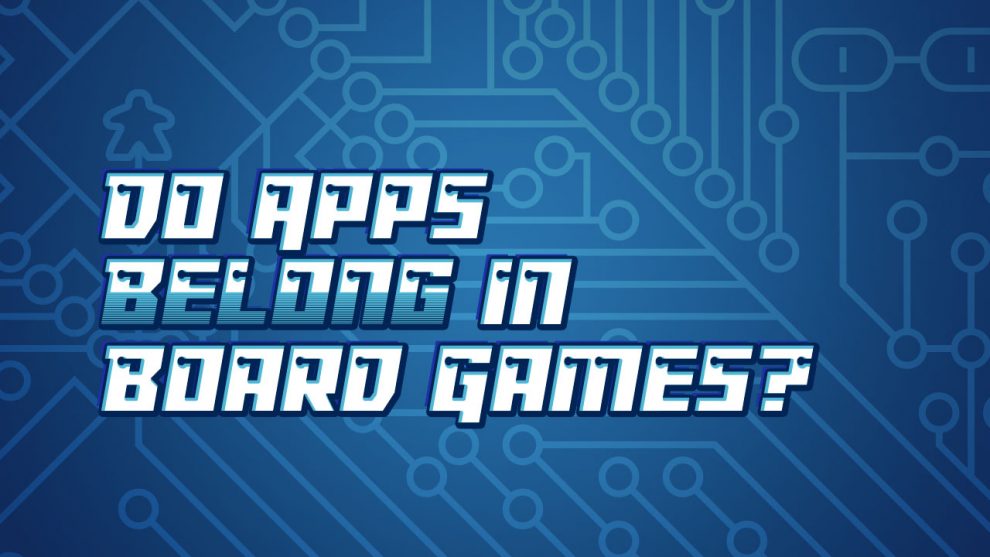





You missed one of the best app-assisted games ever made: 1979’s Stop Thief, which came with a sound effect and hidden movement generator that gave audible clues to help the players find the invisible thief on the fold-out game board. The recent remake uses an Android device to do the same thing. Lots of fun, and an innovative game for the time!
Tad, you’re right, Stop Thief was fantastic. In fact I have the original and the rerelease. They’re both great examples of tech in board games.